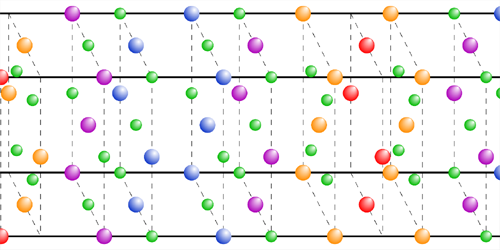Model Correctly Predicts High-Temperature Superconducting Properties
Since the first high-temperature superconducting materials, known as the cuprates, were discovered in 1986, researchers have struggled to explain their properties and to find materials with even higher superconducting transition temperatures (Tc’s). One puzzle has been the cuprates’ wide variation in Tc, ranging from below 10 K to above 130 K. Now Masatoshi Imada of Waseda University in Japan and his colleagues have used first-principles calculations to determine the order parameters—which measure the density of superconducting electrons—for four cuprate materials and have predicted the Tc’s based on those order parameters [1]. The researchers have also found what they believe is the fundamental parameter that determines Tc in a given material, which they hope will lead to the development of higher-temperature superconductors.
For each material, Imada and his colleagues applied the basic principles of quantum mechanics, focusing on the planes of copper and oxygen atoms that are known to host the superconducting electrons. They used a combination of numerical techniques, including one supplemented by machine learning, and did not require any adjustable parameters.
The four calculated order parameters agreed with experiments, including their dependence on doping (slight variations in composition), suggesting that the team’s model had captured fundamental aspects of cuprate superconductivity. The researchers found that the order parameter in each case is determined by the effective repulsion energy between two electrons located at the same atomic site in the crystal divided by the electron kinetic energy. This suggests that materials exhibiting stronger electron–electron repulsion should sustain larger superconducting currents and have higher Tc’s. It also supports a particular mechanism for electron pairing that leads to superconductivity—a counterintuitive concept known as attraction by repulsion.
–David Ehrenstein
David Ehrenstein is a Senior Editor for Physics Magazine.
References
- M. T. Schmid et al., “Superconductivity studied by solving ab initio low-energy effective Hamiltonians for carrier doped CaCuO2, Bi2Sr2CuO6, Bi2Sr2CaCu2O8, and HgBa2CuO4,” Phys. Rev. X 13, 041036 (2023).




